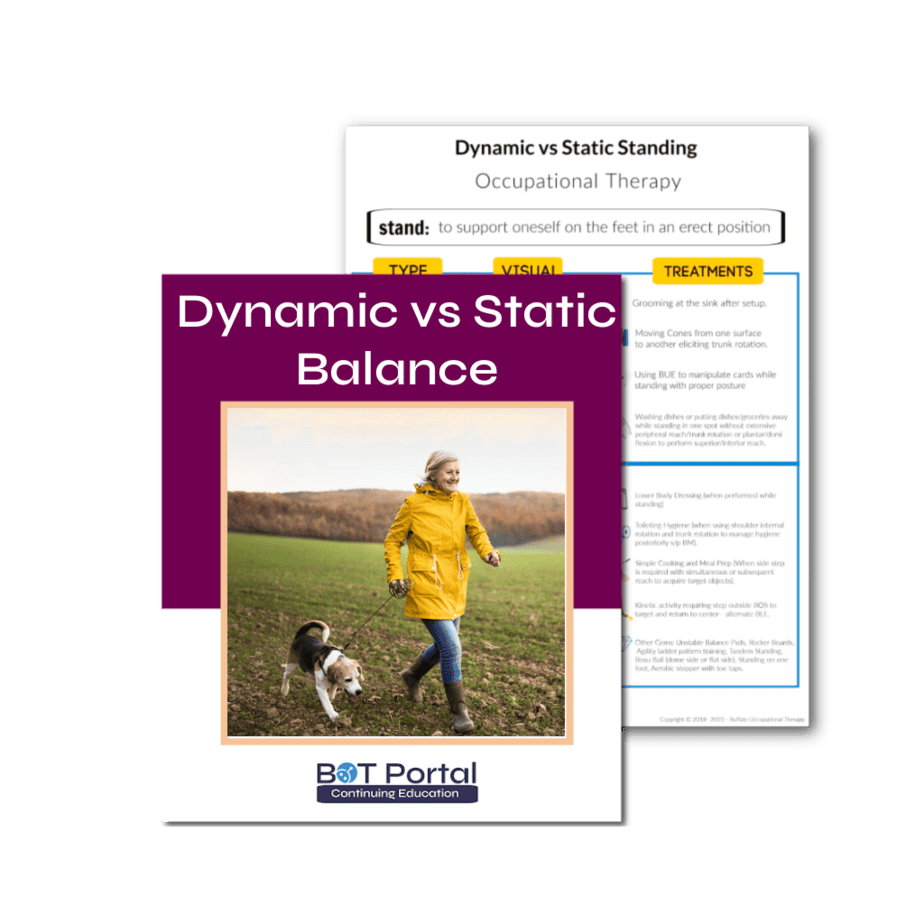Description
Dynamic Balance vs Static Balance
Note: These are ideas for dynamic balance and static balance are to inform daily practice. Many research-supported intervention trajectories are shown to promote remediation, and everyone is different! Do your research! This is merely a tool in your toolkit. 🙂
Occupational therapy addresses both static and dynamic balance to promote independence, safety, and participation in daily activities. Static balance refers to the ability to maintain stability and control while stationary, such as standing still or sitting upright, while dynamic balance involves maintaining stability and control while moving or changing positions, such as walking, reaching, or transitioning between activities. Both forms of balance are essential for performing activities of daily living, work tasks, and leisure pursuits, and occupational therapists incorporate interventions to improve both static balance and dynamic balance skills.
Static balance is crucial for activities that require maintaining a stable posture or position, such as standing in line, cooking at a stove, or sitting at a desk. Occupational therapy interventions for static balance may include exercises to strengthen core muscles, improve postural alignment, and enhance proprioception and body awareness. For example, individuals may practice standing on one leg, balancing on a foam pad or balance board, or performing static balance exercises while incorporating upper extremity tasks such as reaching or carrying objects.
Dynamic balance, on the other hand, is essential for activities that involve movement, coordination, and adaptation to changing environmental demands, such as walking on uneven surfaces, navigating stairs, or reaching for objects while standing. Occupational therapy interventions for dynamic balance focus on improving coordination, agility, and reaction time to facilitate safe and efficient movement during daily activities. For example, individuals may practice walking on different surfaces, stepping over obstacles, or performing dynamic balance exercises while incorporating functional tasks such as turning, bending, or reaching.
Occupational therapists use a variety of therapeutic techniques and activities to address both static and dynamic balance, including balance training exercises, functional activities, task-specific practice, and environmental modifications. They tailor interventions to the individual’s unique needs, goals, and functional abilities, ensuring a holistic approach to balance rehabilitation. By improving static and dynamic balance skills, occupational therapy helps individuals enhance their mobility, prevent falls and injuries, and regain confidence and independence in daily life activities.
What are some helpful links?
Check out BOT Portal: Resource Site for Occupational Therapy Students and Practitioners




